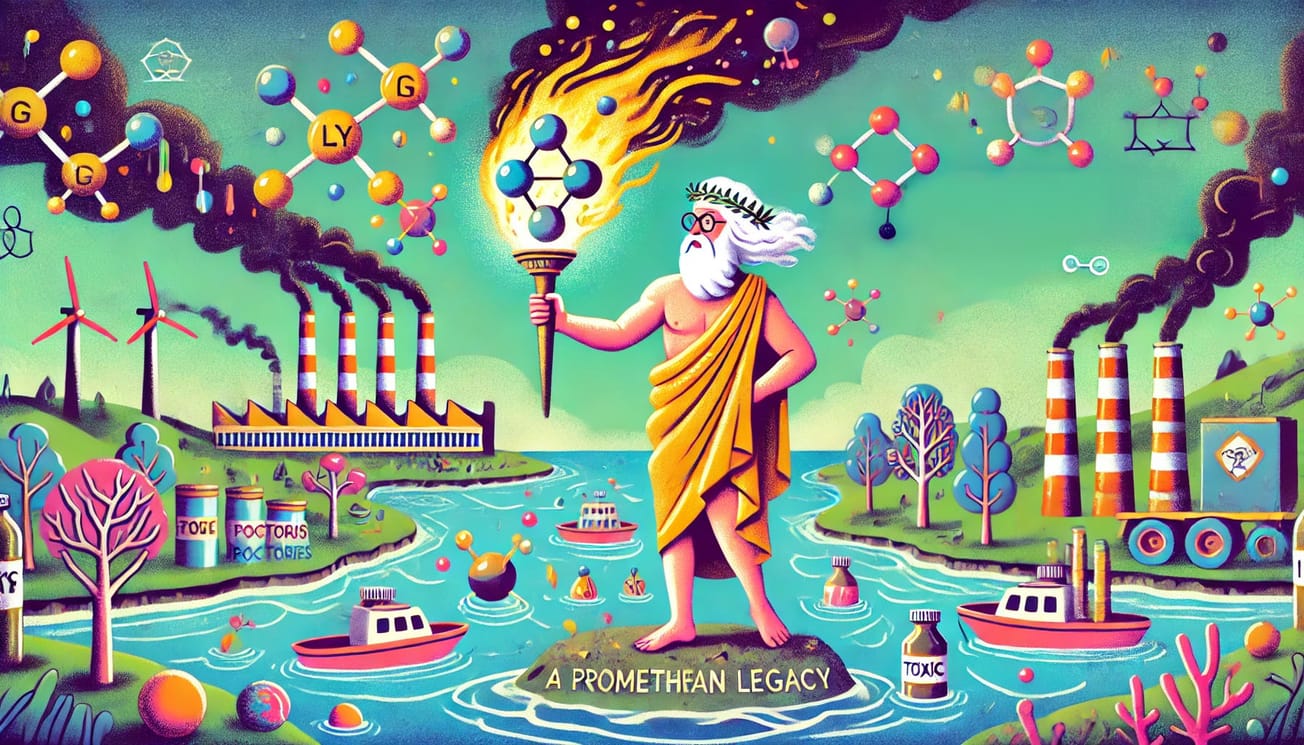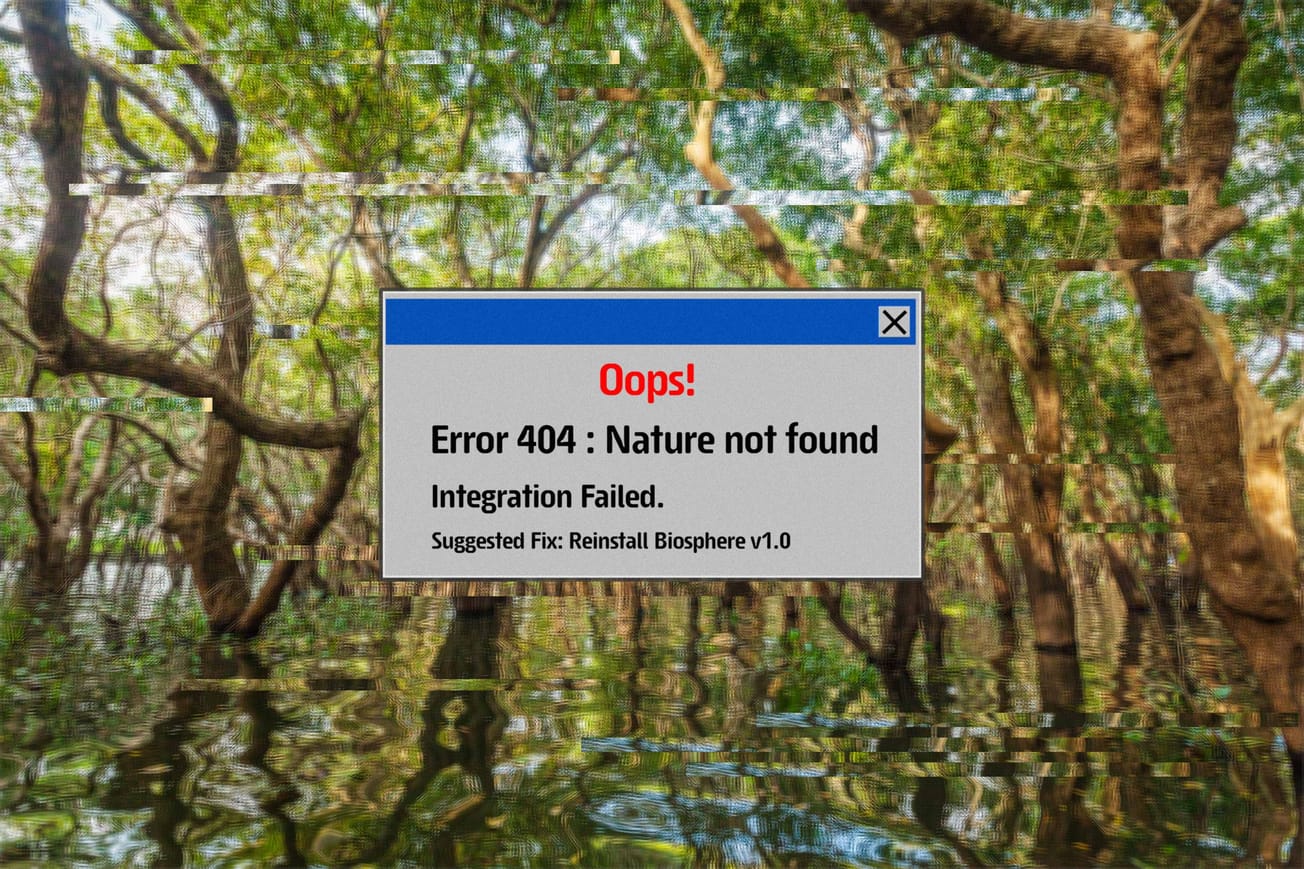Since World War II mankind has been creating an artificial and alien environment with far reaching and unknowable consequences, by unleashing 350,000 synthetic chemicals into the natural environment. (Wang et al. 2020). This unrelenting growth of synthetic chemicals continues unabated, with the United States alone producing an average of 1,500 new substances each year (GAO 2019).
The natural environment in which we evolved is being remade by the release of a staggering 220 billion tons of man-made chemicals per year. By comparison, anthropogenic releases of greenhouse gases add up to only 20% of synthetic chemical releases on a weight-equivalent basis. In addition to the direct release of synthetic chemicals into our soils, water systems and atmosphere, trillions of tons of chemically active materials are also annually discharged from mining, mineral processing, farming, construction, and energy production activities. (Cribb, 2021; Pure Earth; Green Cross Switzerland, 2016).
We seem to be living out the modern version of the Promethean story, where the gifts of technology coupled with an economic system demanding perpetual growth have bequeathed a trail of unintended and unknowable consequences. It is impossible to model the long-term impact of the synthetic chemical environment we are creating. The critical concerns we have about global warming and ecological health are strikingly reflected in the potentially existential harm we are inflicting on our own bodies and those of our children. Just as the world has slowly awakened to the devastating long-term effects of the build-up of heat-trapping and lower ozone layer hole-carving gases in the atmosphere, we are only now beginning to become aware of the similarly insidious accumulation of toxins within nature and our internal environments — an accumulation that could have profound and multi-generational implications for human well-being.
The Illusion of Unending Progress in Health
For decades, we have celebrated our victories over infectious diseases, believing these achievements will usher in an era of unparalleled human health and longevity. Vaccines, antibiotics, and public health measures have indeed saved countless lives, leading to a significant decline in deaths from infectious diseases. However, this success has masked a deeper, more pervasive threat: the long-term impact of our industrialized way of life on our biological viability. Humans have evolved over 250 millennia, all but the last hundred years have been in a very narrow range of chemical conditions. The extremely rapid and gross alteration of these environmental conditions is occurring at our peril.
While we have focused on combating infectious agents, with dramatic results, we have largely ignored the steady build-up of environmental toxins within our bodies. These toxins, including heavy metals, endocrine-disrupting chemicals (EDCs), and microplastics, are byproducts of the very lifestyle that has allowed us to conquer infectious diseases.
Internal Pollution: A Silent Crisis
Much like the gradual accumulation of heat trapping gases in the atmosphere, our constant exposure to environmental pollutants is leading to an internal build-up of harmful substances in our bodies. These pollutants, from microplastics to heavy metals to broad-spectrum herbicides and endocrine disrupting chemicals (EDCs), are everywhere—in the air we breathe, the water we drink, and the food we eat. They accumulate in our organs, interfere with our endocrine systems, and contribute to a host of chronic diseases, including cancer, cardiovascular disease, and infertility (Endocrine.org) (Frontiers).
This internal pollution is not just an abstract health risk. It reflects a fundamental threat to our biological sustainability. For instance, research shows that sperm counts have plummeted by over 50% since the 1970s, a decline linked to chemical exposures among other factors (BioMed Central) (SciTechDaily). This mirrors the accelerated degradation of the ecosystems on which we rely, where pollution disrupts natural processes and leads to the collapse of biodiversity.
Furthermore, more recent studies suggest that this decline may have begun even earlier, with some estimates indicating that sperm counts could have dropped by as much as 70% since the 1940s, when we embarked on the development of modern chemical industrialization. This downward trend has raised significant concerns among scientists about male reproductive health and fertility, as well as broader implications for population stability. (SciTechDaily). Dropping, on average, at a rate of 1% per year since World War II, how many years of reproductive virility remain? And what will it take to stop this unwelcome trend.
Unfortunately, even breast milk is heavily contaminated with dozens of toxic chemicals including 16 types of PFAS’s, PCB’s, Dioxins, Pesticides, Phthalates, and heavy metals including lead, mercury, arsenic and cadmium.
Heavy metals, pesticides, and EDCs, have been linked to a wide array of other health problems, ranging from cardiovascular disease to cancer. EDCs commonly found in plastics, pesticides, and consumer products have become ubiquitous in our environment and interfere with hormonal functions, and can lead to adverse health effects even at very low doses. (Endocrine.org). Exposure to heavy metals like lead, cadmium, and arsenic, along with other environmental toxins, has dramatically increased due to industrial activities, agriculture, and urbanization. These substances accumulate in the body over time, leading to chronic health conditions (Frontiers). Per- and polyfluoroalkyl substances (PFAS), often referred to as "forever chemicals" due to their persistence in the environment, have been found in various consumer products and are now present in nearly every human body (ScienceDaily).
A growing body of scientific evidence shows that microplastics are accumulating in human lungs, placentas, reproductive organs, livers, kidneys, knee and elbow joints, blood vessels, and bone marrow. A particularly concerning buildup of microplastics in brain samples is highlighted in a research paper that is presently undergoing peer review and was released online by the National Institutes of Health. The lead author of the study, Dr. Matthew Campen, a toxicologist and professor of pharmaceutical sciences at the University of New Mexico, says that the researchers found an average of roughly 0.5% plastic by weight in the brain samples that were examined in early 2024. At what point does this impair our mental faculties – 1%, 10%? Nobody knows.
A recent study published in The Lancet Planetary Health draws direct connections between environmental degradation, the collapse of ecosystems, and the rise of non-communicable diseases linked to chemical exposure in humans.
The Blindness to Long-Term Impact
It is one issue to choose to impair our personal health, but to pass toxicity on to our children should be treated as an entirely different matter. Toxins in our bodies are increasingly recognized as also having significant impacts on our genes and, consequently, on our progeny. Research shows that environmental toxins, including heavy metals, EDCs and other pollutants, can alter gene expression without changing the underlying DNA sequence. These changes can be inheritable, meaning that the effects of exposure can persist across multiple generations. This is clearly demonstrated from studies on endocrine-disrupting chemicals like bisphenol A (BPA) that have shown that exposure can cause epigenetic modifications that are associated with reproductive issues and metabolic disorders in offspring. (Endocrine.org) (ScienceDaily).
The global health landscape, much like our ecological one, is increasingly a product of short-term gains achieved without consideration for long-term consequences. Our focus on immediate and often short-lived health victories—such as reducing the incidence of infectious disease, which are understandably important —has blinded us to the creeping dangers posed by the toxins we accumulate over time.
This parallel blindness to the long-term impact of our actions—whether on the natural ecosystems on which we depend or on our bodies—poses an existential risk. Where is the point of no return regarding microplastics in our brains and uteruses? Are we a century away, or just a few years? These invasive and long-lasting materials are so deeply interwoven into our products, lifestyle and economy, will we be given enough advance notice to extract ourselves from them, and them from ourselves, in time? How much PFAS contamination can we tolerate? For how long? The concerns over global warming and ecological health are not just environmental issues; they are also material threats to our own and our progeny’s biological well-being. They are both literally a manifestation of the same way of looking at the world.
Our relentless pursuit of consumptive materialism to fuel the growth of modern industrial societies, without fully grasping its far-reaching and powerful consequences, has brought us to a juncture that threatens the long-term sustainability of both our environment and perhaps our own health. To safeguard the future of both our planet and our species, we must adopt a rigorous evaluation of our underlying economic models and lifestyle aspirations. The time to act is now, before the damage becomes irreversible, and the window for meaningful change closes.













